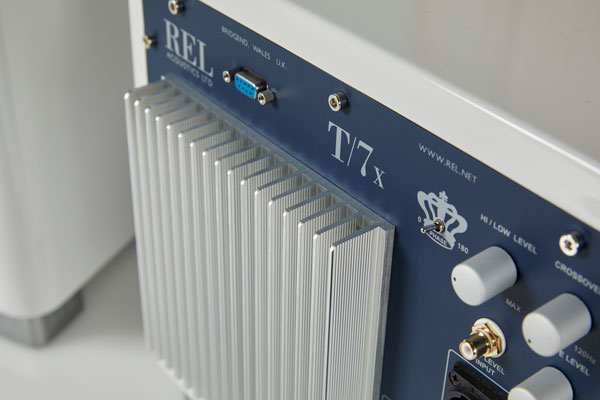Actually I had a similar question.
If people are spending a good amount of money on a DAC like Holo May or Denafrips Terminator ... it doesn't seem to make sense to me that the Sub is using a DSP and basically converting the analog signal back to a digital signal, do the processing in the digital domain and then convert the digital signal back to an analog signal.
Introducing an extra ADC / DAC conversion in the audio path doesn't make sense. The ADC / DAC that used in the sub is inferior to e.g. Holo May and Denafrips Terminator.
A low pass filter and gain can be implemented using analog components like REL does.
And the other EQ / room mode features the DSP offers should in my opinion be done on the source in the digital domain, before it goes in to the DAC.
Any thoughts?
Yes - its not a good idea to combine analog passive crossovers with digital dsp processing, when the dsp can do the crossover as well in a much better way.
The best sound result youre gonna get with an all digital solution, without analog coils , resistors and capacitors.
This means using an active loudspeaker with dsp crossovers and a digital signal from the source directly into the dsp crossover. No A/D converter needed or used. The room correction is also best to do in digital domain without conversion to analog being done anywhere in the signal path.
Not many customers have heard such a system , its only a couple of brands that uses this technique extensively. Genelec with the 83xx series , Linn products with exakt, and GRIMM audio is a couple of brands that uses this technique to get a better, clearer sound. And yes - the sound is better than using analog, passive loudspeakers.
I see a lot of people trying to combine passive loudspeakers with dsp roomcorrection for thousands of dollars and I always ask: why ? Massive gains can be had with an all digital solution, including the loudspeakers crossovers. Throw away those sound hostile passive coils in the signal paths ! A passive loudspeaker sounds less dynamic, less clear and less pitch accurate than a good, active dsp-loudspeaker with everything in the digital domain.
About combining dsp roomcorrection with passive loudspeakers : - The risk is rather high that you will end up getting the worst from both analog and digital, if you try to combine those.
This is just an advice on how to get real improvements of the sound.
Been there, done that.
—————
If 100% transparent is the number 10 , and worse is a lower number, it can be like this:
A passive loudspeaker with passive crossovers with an A/D-D/A dsp roomcorrection:
(100% transparent would be the number 30.)
Digital source : 10
Passive crossover: 6
dsp roomcorrection with A/D and D/A : 8
Sum: 24
or
An active dsp crossover-speaker with digital roomcorrection and no A/D conversion:
Digital source (1) with both dsp crossover (2) and dsp roomcorrection (3) done in digital domain: total = maybe 9.
Sum: 29
As you can see , a better more clear sound can be had with the all digital solution.

 rel.net
rel.net

